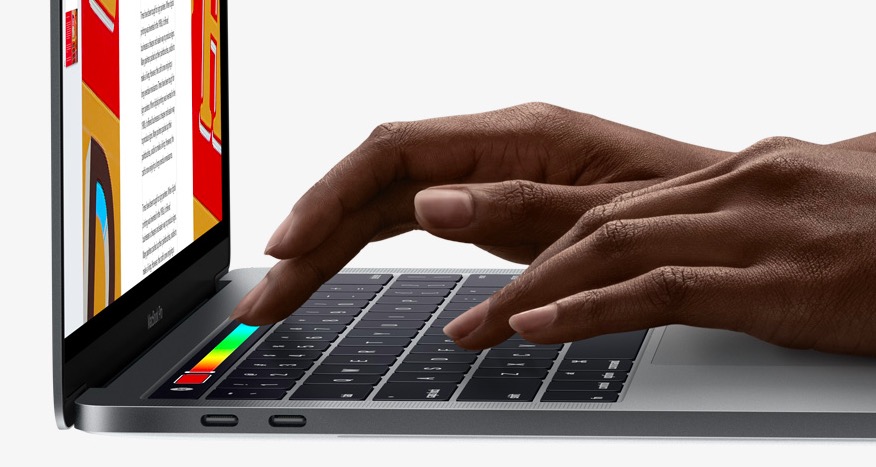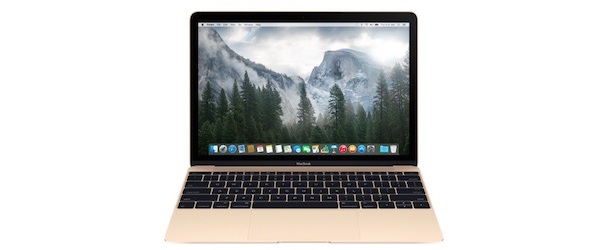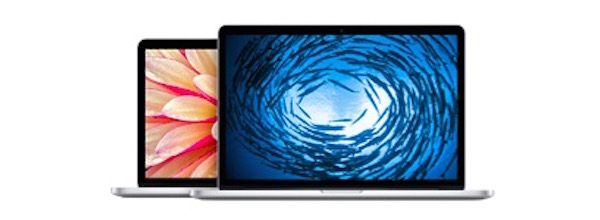Mac
Information
Dr. Simon Spence
Christmas Treats from Apple
Looking at Apple’s current line-up and reflecting back on the changes this year, I think there are a few product highlights out there. Here is my run-down of what’s hot in the current Apple range:
iPhone:
I am stil using an iPhone X as I don’t feel that the iPhone XS or XR are different enough to the X, but both new lines are great for people who are on an older bezel phone (the ones with the black strips above and below the screens. The iPhone XS and XR are effectively the iPhone Pro range and are not for everyone, given that they come in at a higher price point to the normal iPhone 8 or 7. But if you are looking for a top-of-the-range iPhone, the XS and XR are superb.
Which leads to the question- which one? For me the gap between the XS and XR is so small that the XR should be your choice- or at least ask, why do you really need a XS over the XR? The XR has a good balance in terms of size of screen, is much cheaper than the XS and yet comes with the same chip inside. The difference is that the XS has a slightly better dual-camera and telephoto system, but for most people this may not be relevant...
You should take a look at the iPhone comparison page to compare the two models side by side:
https://www.apple.com/ie/iphone/compare/
But the XS starts at €1179 whereas the XR comes in at €879, so it is definitely worth considering the XR and all of its comparable features. It is not a lesser iPhone, it just has a few minor omissions.
iPad:
The new iPad lineup seems to tick all boxes for me- I adore the iPad Pro and am typing this article on the new iPad Pro with Folio case. It is light, very very fast, and a gem to carry around. I’m trying to use this more frequently, over my MacBook Pro, as I like the multi-tasking and find I can do so much more on this device than on previous iPad models.
But at the same time you can buy a standard 9.7” iPad for a very low price of €369 (32GB) or €459 (128GB) which is good for a device which originally launched in 2010 at $499. When you think about the advances in speed, screen quality, graphics and more in those 8 years, today’s iPad is quite the bargain. The iPad Pro starts at a much higher €909, but has a larger screen, Pencil 2 support, Folio case support and more. I am happy with my choice at a higher price, but the starter 9.7” iPad could be many people’s only computer, for €369.
Watch:
The changes to the Apple Watch in 2018 have been incremental, and I stil have a Series 2 version. The new Series 4 is likely to answer my major concern- speed. I will be getting a new Watch over Christmas as the combination of the speed changes and the slightly larger display (44mm) makes this a worthy upgrade for earlier Watch users. If you have a Series 3- wait. But for anyone with an earlier model, there is enough of a gap now to justify opening your wallet.

AirPods and Pencil:
If you are looking for a smaller price as a gift, then the AirPods and new Apple Pencil 2 are the ideal choice. The new Pencil is a great combination with the new iPad Pro - in fact it is the only Pencil you can use with this model! But it is so much better than Pencil 1 as it magnetically connects to the side of the iPad, where it stays tightly linked and charges!
The AirPods is one of those Apple gems which still impresses me long after their launch. The AirPods are small, fit neatly into the small jeans pocket and are so much better to use than the cabled headphones or even traditional Bluetooth headsets. Plus the battery length is incredible- I mostly forget to charge them at all, and only do this every few weeks.
Mac
I bought a new MacBook Air recently and this Mac would go back in as my recommended Mac laptop for many people. The balance of new case, the higher speed and the new retina-display all add up to a neat package. It sits above the MacBook in terms of screen size and speed and below the MacBook Pro for sheer power, but this is a sweet spot for most users and I can see it staying as Apple’s best selling laptop.
Overall there are some nice pieces out there for Christmas purchases- these are just a few of my own favourites!
The New World of Apple Laptops
After last week's keynote, here is a quick rundown on the new Apple laptop landscape.

Our Guide to Choosing a New MacBook Laptop
On April 10th, Apple started to take orders for its new MacBook laptop. This muddied the waters slightly as they already had two ranges of laptops for sale. So how do you choose the right laptop for the task in hand- here is a run down:

MacBook
MacBook: this is the new range and comes with very set options: all have a 12" Retina Display and there is a choice of two chip/storage options and three colours. The colours are gold, space grey and silver and the two chip/storage options are 1.1Ghz chip/256GB or 1.2Ghz chip/512GB (there is also a custom-built option of a 1.3Ghz dual-core Intel Core M chip, costing around 150 extra).
The MacBook is aimed at the traveller, student and people who want to prioritise weight and small size over power. The MacBook is Apple's thinnest laptop and is very light at around less than 1kg.
The MacBook is not the fastest laptop but most users would notice little difference between a MacBook and MacBook Air when using everyday apps.
The MacBook also comes with only one port- a new slim USB-C port which is smaller than a standard USB. You can buy Apple adapters to add external devices if you wish but this laptop is aimed at wireless users. This is a perfect laptop in the age of iCloud Drive, Dropbox, AirPrint, Bluetooth and WiFi.
I see this as the future- this will be the point to which Apple will head with the MacBook Air range. There are relatively few choices with the MacBooks (choose bigger or smaller storage/chip speed, and then pick a colour) and this matches the buying experience when you go to purchase an iPhone or iPad. This is a great mainstream laptop and we expect to see lots of these be sold in 2015.

MacBook Air
MacBook Air: this is still the default laptop for many people as it has most of the lightness of the MacBook, but has a wider range of ports with USB, Thunderbolt, audio and MagSafe 2 power. There is more flexibility on screen sizes with a choice of 11" or 13" displays and you can customise a MacBook Air to come with a 512GB SSD drive instead of the standard 128 or 256.
The MacBook Air is the middle choice- they stand between the ultimate lightness and portability of the MacBook, but are smaller (and slower) than a MacBook Pro. For people who need to plug in their printer or iPad and aren't ready to choose the minimal ports of the MacBook, the MacBook Air is a safe choice.

MacBook Pro
MacBook Pro: becoming more of a specialist choice, the MacBook Pro offers more processor and graphics power options, along with larger screens- 13" or 15". MacBook Pros come with 128, 256 or 512GB of storage and some allow an upgrade to a 1TB SSD drive. These are the fastest Apple laptops but the top 15" costs twice as much as the top of the line MacBook Air.
If you need a bigger screen, lots of power, extra storage and the extra ports, this is the beast for the professional video editor and power user.
Summary:
In 2015 we see most people going for a MacBook Air. The lighter MacBook will appeal to many of the busy business travellers, a students, and home users who don't need to connect extra devices. The MacBook Air is cheaper and so will suit many homes and users on a budget, plus the extra few ports will mean that it will be a safer bet for those who say "what if I nee to connect my...".
But I expect to see the MacBook Air phased out towards the end of 2016 or 2017, with the MacBook taking its place.
The MacBook Pro is the only option for those needing the bigger 15" screen and for people who work with power hungry apps (photographers, video editors, website and graphic designers, etc.). The new MacBook Pros are a lot lighter than a few years ago and come without a Superdrive (except for a legacy version which is still old). For most users, the MacBook Pro does not hit the mark, due to its extra weight and the higher price.
If Apple are to keep their traditional two laptop line-up, expect the MacBook to drop in price next year and to slowly take the place of the MacBook Air, with the MacBook Pro keeping is role as the all-powerful, professionals choice.
Simon Spence/2015
Category Changes: the Possibility of a Revised MacBook Air
The recent rumour about Apple revising the MacBook Air leads to the question–how powerful should a low end laptop be? In the 00's, Apple's category division was simple– PowerBook laptops were for professionals and iBook laptops suited home users.

In more recent times, the introduction of the MacBook Air followed a similar path, with the original version being quite underpowered compared to its professional counterpart. But for Apple, the problem was cost. The Air came with a higher price than the iBook and this left it stranded between the two categories. The chip in the original MacBook Air was very slow in comparison to the professional line-up. But as the MacBook Air settled down, Apple built in better chips, recently an I5 or i7, and the performance of this laptop began to reach above threshold required by the average user. We have recommended MacBook Airs into many businesses, where we would not have looked at an iBook ten years ago.
Therefore the waters have narrowed between the pro and consumer laptop families and this is something we welcomed because it gives a wider choice where business users don't dismiss the lower range. In fact the old category division of professional/consumer no longer applies. Today the choice between MacBook Air vs Pro lies primarily in screen size, plus variations on graphics power and chip speed.
We hope that this is not a position which Apple reverses in the future, by aiming any new MacBook Air towards the lower end and widening the gap between these two sections. We think the continuity between Air and Pro is good for buyers and the decision comes down to lifestyle choice, such as weight, design, and form, ahead of a blunter choice of money and speed.
Simon Spence/2015